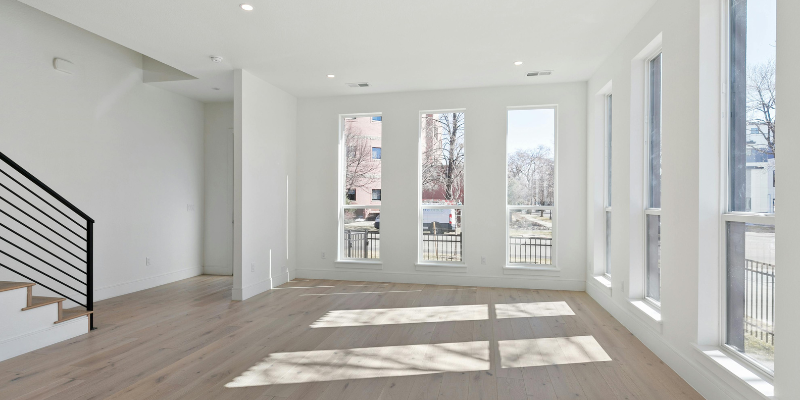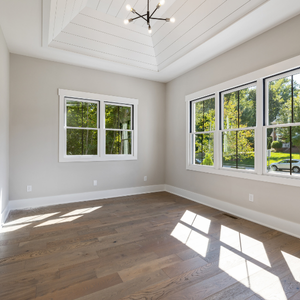
Factors Influencing Property Vacancy Durations
A number of aspects have the potential to shape how long a property in Minneapolis may be unoccupied, relating to compliance with the local laws. Seasonality is one of the most important factors since there are marked seasonal variations due to decrease in movement during winters.
Economic conditions also impact vacancy durations; for example, during recessions due to lack of demand, properties might remain unoccupied longer. Zoning regulations and the dynamics of neighboring regions either add or reduce the appeal of a particular property which affects its marketability and occupancy status.
In addition, the specific circumstances surrounding such real estate are very important — homes that can only be occupied after major repairs or renovations tend to remain vacant for an extended period. Finally, decisions made by the owner concerning advertising techniques as well as pricing play a vital role; however, working directly with a serious buyer like Henry Home Buyer, who offers fair cash deals, can significantly minimize the time homes stay unoccupied in Minneapolis.
Legal Implications of Long-term Vacancies in Minneapolis

In Minneapolis, homeowners should be aware that long-term vacant properties have specific legal considerations in relation to city regulations penalty avoidance. Specific laws may exist within the region that attend unoccupied residences with measures designed to minimize neighborhood decay and safety hazards.
As per Minneapolis municipal laws, property owners must actively engage with the city’s Vacant Building Registration Program after 30 days of inactivity in occupancy as such properties need registration. Non adherence comes with financial penalties and enforcement action.
Furthermore, exterior maintenance scrutiny mandates Dallas property owners to ensure vacant homes are clear of flammable objects, graffiti or any unsightly structural damage. There is also a matter of property taxation wherein there can be assessment adjustments based on an assumed valuation for long time unoccupied structures.
Legal penalties can arise from assumption that no one is occupying the house, skimming guard who illegally sub let it or deliberately destroy it as reported around the world. Awareness of these rules safeguards against complications resulting from chronic vacancy aiding stabilizing community crime alongside aiding community safety.
Is the Property Vacancy Penalty Increase in Minneapolis?
Recently, the city of Minneapolis has moved forward with tackling the problem of abandoned properties within the municipality, one of which involves increasing the property vacancy penalty. The goal of boosted vacancy penalties is to entice owners to occupy their houses to curb the buildup of unoccupied buildings that could deteriorate neighborhoods.
Before now, fines associated with keeping a property unoccupied were negligible. With new rules, these fines have increased significantly. This change seeks to motivate property owners to either rent or lease their homes faster if they do not wish to incur pentalties.
By increasing the competitive housing market environment, along with revitalizing communities in Minneapolis he hopes these changes will strengthen vital elements of any vibrant metropolis.
Their understanding becomes essential for planning because by moving from suburbia into urban housing the prospect financially motivates families and thus helps build a stable metropolitan region- shrinks potential losses by postponing further investments.
Preparing Your Home for an Extended Absence: A Checklist for Peace of Mind

If you are planning to be away for an extended period, there are some local rules and policies that need to be followed in Minneapolis, as well ensuring peace of mind while being away. Make sure that all the windows and doors are locked because failure to do so would give space for uninvited entry. You may also install a security system that has cameras or motion detectors.
For the duration that you are away, adjust your energy policy because non-essential electronics should be unplugged. This not only saves energy but also reduces the chances of electrical fire incidents. Set your thermostat in a way that conserves energy during Minnesota’s harsh winters, while providing enough warmth to prevent pipes from freezing.
To ensure absence is not signaled through overflowing mailboxes, set up a collection or forward mail temporarily with USPS services. It is essential to brief a trusted friend or neighbor about your plans so they can monitor the property and handle any unpredictable issues.
Make sure smoke detectors are functioning properly before leaving, replacing batteries if required. To further discourage potential unsolicited guests indoors, setting light timers to create occupancy illusions can be effective.
In case heavy snow is expected outdoors like sidewalks and driveways along with maintaining them will require hired help or neighbors which unmaintained property tends invites alongside attention from city officials enforcing local ordinances with burglars lurking around around.
Key Factors Influencing the Duration a Property Can Stay Vacant in Minnesota
In Minnesota, several important considerations affect the length of time a property may remain vacant before homeowners need to take measures to conform with local policies. In Minneapolis, there are particular rules that address what steps homeowners must take when their house is left empty for a substantial duration.
A central consideration is the routine maintenance and servicing required so that a structure does not degrade due to neglect and city limits lose compliance. Homeowners must ensure that mowing, snow clearance, and perimeter maintenance of structures are performed as needed, avoiding penalties or fines.
Measurable spent on security like installation of alarm systems or scheduled timer switches for lighting will partially enhance vacancy duration by decreasing potential vandalism or burglary risks. Additionally, properties may need to be registered with the city if they will be unoccupied beyond certain periods which often necessitates payment of a vacant building registration fee.
Policies can also impose terms about how long a house can be uninhabited prior to coverage being affected, which also mandatorily alters homeowner decisions regarding occupancy status. A clear grasp of these factors enables homeowners in Minneapolis to strike an appropriate balance between liability mitigation and unoccupied property management compliant with regulations, or to sell your home for cash in Bloomington or nearby cities if maintaining a vacant home becomes too burdensome.
Exploring the Financial Consequences of Long-term Vacancy on Home Value
Leaving your property in Minneapolis unattended for a long time can have serious financial ramifications which deal with the value of the home. Homeowners should be informed about the devaluation that may occur as a result of prolonged vacancy.
The absence of occupants can result in decay, leading to costly repairs and maintenance once it is reoccupied. Moreover, insurance costs might increase because insurers consider unguarded premises as higher risk candidates due to vandalism, burglary, or damage from undetected issues such as leaking water or infestation from pests.
In addition, local authorities might impose penalties on homeowners who vacate properties for extended periods without relevant justification – rendering the property uninhabited while not structured to mitigate ongoing deterioration. Such financial implications are important to understand for homeowners who are eager to safeguard their investment and market value during periods when they are not able to inhabit their homes.
Comparing Short-term vs Long-term Vacancy Effects on Residential Properties
Homeowners in Minneapolis trying to understand the impact of short-term and long-term vacancy periods on residential properties face a web of rules and possible consequences. While short absences, such as vacations or business travel, fall under the category of short-term vacancies, they are easier to manage from a regulatory standpoint. However, homeowners still need to attend to basic maintenance tasks such as preventing vandalism or utility issues.
While these long-term absences may be beneficial for some, they bring with them more intrusive regulations under Minneapolis ordinances. Secure registration with city officials becomes mandatory if the home is unoccupied for extended periods and there are strict security measures that need to be followed.
Increased focus on vacant homes also comes with heightened attention to property upkeep standards, tax obligations, and community impact. The city makes it clear that vacant properties cannot turn into community eyesores, which means preserving safety and aesthetic benchmarks.
For homeowners seeking to steer clear of fines while keeping their properties compliant within the complex system of Minneapolis regulations , grasping these distinctions is vital .
How Long Can a Home Be Unoccupied?

In Minneapolis, knowing the rules about how long a home can sit vacant is important for homeowners. In terms of city ordinances, a property within Minneapolis does not require any special permits or intervention for up to 90 days of being left unoccupied.
As well, there are no other additional fines or penalties placed on homeowners as long as the local authorities have been notified if it’s going to be longer than this period. During absences, the City of Minneapolis expects the owners to actively manage these properties ensuring that their houses are protected against possible incursable damages during and after this timeline.
Maintenance encompasses regular monitoring and caretaking to prevent and ward off abandonment resulting in loss, such as damage, destruction by thieves, and intrusion into restricted zones. Also, during such times of absence over 30 days, most insurance policies change clauses, elevating business risk, rendering them void, meaning extensive restructuring will be mandatory post duration.
With this active and responsive approach, along with sound knowledge of the rules surrounding residences, you can easily maintain compliance without breaching many laws while residing in their uninhabited houses, or choose to sell your home for cash in Minneapolis or nearby cities if managing a vacant property no longer suits your needs.
If you’re wondering how long you can leave your house vacant, you may also be considering selling. Whether you need to sell fast, avoid expensive repairs, or want a hassle-free experience, Henry Home Buyer is here to help. We offer fair cash offers, handle all the paperwork, and make the process easy from start to finish. Ready to sell or just have questions? Contact us at (612) 430-8822 for a no-obligation offer. Get started today!
Helpful Minneapolis Blog Articles
- Understanding Home Staging Costs In Minneapolis
- Required Documents For Selling Your House In Minneapolis, MN
- Selling Without a Real Estate Professional in Minneapolis
- Understanding Minneapolis Vacant Property Regulations
- FSBO Costs For Home Sellers In Minneapolis, MN
- Do I Need A Lawyer To Sell My House In Minneapolis, MN?
- Selling A House With A Pending Insurance Claim in Minneapolis
- Inherited A House With Siblings in Minneapolis, Minnesota
- Can I Change Homeowners Insurance After Closing In Minneapolis
- Selling An Inherited House In Minneapolis, Minnesota
- Effortless Excise Tax Calculator For Minneapolis
- How to Stop Foreclosure on Your Home in Minneapolis MN
- Selling a House with a Mortgage Work in Minneapolis MN
- Fixing Up a House to Sell in Minneapolis MN
- Can the Seller Back Out of a Real Estate Contract in Minneapolis, MN?
- How Do You Buy a House Before Selling Yours in Minneapolis, MN

| CITY OF MINNEAPOLIS | MINNEAPOLIS, MINNESOTA | TAX POLICIES | PLUMBING SYSTEMS | STATUTES |
